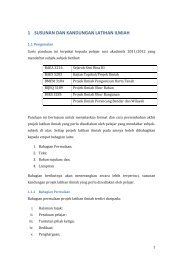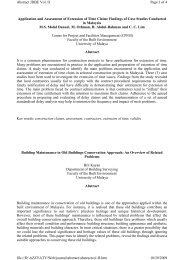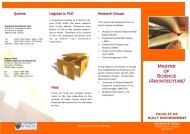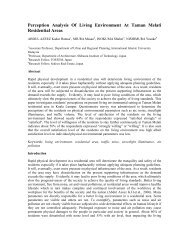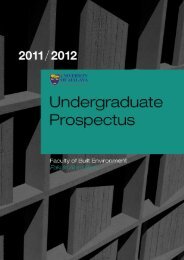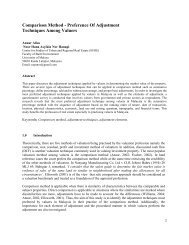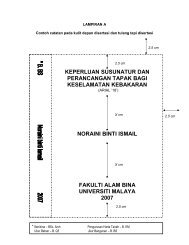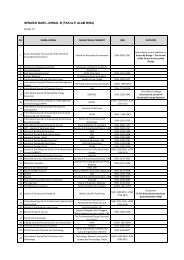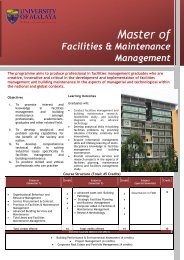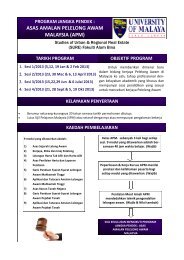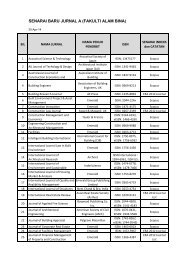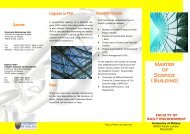Factors Influencing Office Building Occupation Decision by Tenants ...
Factors Influencing Office Building Occupation Decision by Tenants ...
Factors Influencing Office Building Occupation Decision by Tenants ...
Create successful ePaper yourself
Turn your PDF publications into a flip-book with our unique Google optimized e-Paper software.
<strong>Factors</strong> <strong>Influencing</strong> <strong>Office</strong> <strong>Building</strong> <strong>Occupation</strong> <strong>Decision</strong> <strong>by</strong> <strong>Tenants</strong> in Kuala Lumpur city centre – a Delphi Studyrounds until a fairly high degree ofconsensus is reached, or until the expertsno longer modify their previousestimates.Selecting research participants is acritical component of Delphi researchsince it is their expert opinions uponwhich the output of the Delphi is based(Ashton 1986; Bolger & Wright 1994;Parente, Anderson, Myers, & O’Brien,1994). The sample size varies in theirstudies from 4 to 171 “experts”. As such,it can be concluded that there is no“typical” Delphi; rather that the methodis modified to suit the circumstances andresearch question.Undertaking the Delphi Method forthis StudyThe Delphi Panel and the DelphiProcessThe focus of the study was the elicitationof knowledge and opinion fromindividuals with broad cross-sectionalperspectives on tenants’ selection foroffice space occupation decisions. Theaim here was to survey field experts’perspectives of tenants’ selection of therelevant and important factors with a viewto consolidating the factors listed in Table1. Thus tenants were not selected asrespondents in this survey but rather wereinvolved separately in a different part ofthe study. The panel of respondents wasdesigned to have representatives fromtwo groups comprising the propertyconsultants/leasing agents fromestablished firms who generally interactwith prospective tenants and property/leasing managers of top grade officebuildings in Kuala Lumpur. A total offorty persons i.e. twenty from each groupwere invited to participate in the firstround of the study. The study wasconducted in the strict confidencethroughout and anonymity wasguaranteed to respondents.The first round of the questionnairewas emailed to the panellists in midNovember 2009. Reminder notices viaemail and telephone calls were sent to allexperts who had not replied between lateNovember and early December 2009. Atotal of 27 panellists agreed to participatein the first round of the survey, giving aresponse of 70 percent. They compriseseventeen (17) property consultants/agents who hold senior managementposts and ten (10) property/buildingmanagers. The questionnaire wasdesigned on a five-point Likert scale tomeasure a range of opinions from “Notvery important” to “Very important”. TheStatistical Package for Social Sciences(SPSS) was employed to analyse the datausing the Descriptive Statistics.The first round responses werecollated and analysed and an interimfinding was sent back to the first roundparticipants in late December 2009 inorder to get feedback and comments.During the second round of the survey,the experts are given only the measuresof central tendency for the responsesselected <strong>by</strong> experts in the first round, andare asked to explain in detail when theirsecond round judgments differsubstantially from the first round’smeasures of central tendency. Theprocedure however stopped at the secondround when most of the experts decidedagainst varying from their first roundresponses despite being presented withevidence of different opinions from other75



